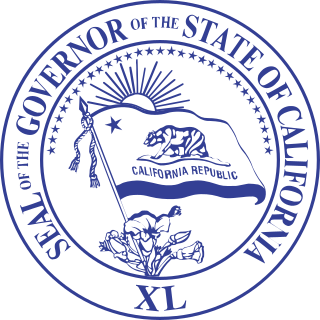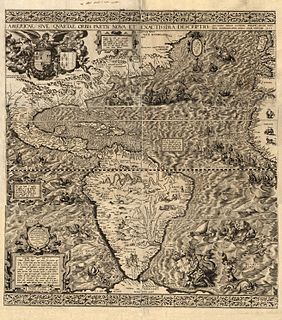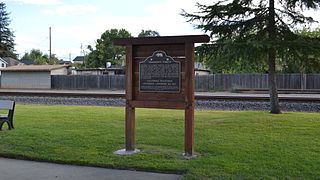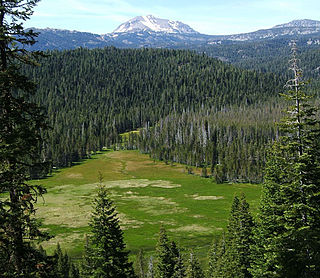Related Research Articles

California is a state in the Pacific Coast region of the United States. With over 39.3 million residents across a total area of approximately 163,696 square miles (423,970 km2), it is the most populous U.S. state and the third-largest by area, as well as the world's thirty-fourth-most-populous subnational entity. California is also the most populated subnational entity in North America, and has its state capital in Sacramento. The Greater Los Angeles area and the San Francisco Bay Area are the nation's second- and fifth-most-populous urban regions, with more than 18.7 million and 9.6 million residents respectively. Los Angeles is California's most populous city, and the country's second-most-populous, after New York City. California also has the nation's most populous county, Los Angeles County, and its largest county by area, San Bernardino County. The City and County of San Francisco is both the country's second most densely populated major city after New York City and the fifth-most-densely populated county, behind only four of the five New York City boroughs.

Los Angeles, officially the City of Los Angeles and often abbreviated as L.A., is the largest city in California. With an estimated population of nearly four million people, it is the second most populous city in the United States and the third most populous city in North America. Los Angeles is known for its Mediterranean climate, ethnic diversity, Hollywood entertainment industry, and its sprawling metropolis.

The University of California, Berkeley is a public land-grant research university in Berkeley, California. Established in 1868 as the state's first land-grant university, it was the first campus of the University of California system and a founding member of the Association of American Universities. Its 14 colleges and schools offer over 350 degree programs and enroll some 31,000 undergraduate and 12,000 graduate students. Berkeley is ranked among the world's top universities by major educational publications.

Hollywood is a neighborhood in the central region of Los Angeles, California. Its name has come to be a shorthand reference for the U.S. film industry and the people associated with it. Many of its studios such as Paramount Pictures, Warner Bros., and Universal Pictures were founded there and Paramount still has its studios there.

The California Gold Rush (1848–1855) was a gold rush that began on January 24, 1848, when gold was found by James W. Marshall at Sutter's Mill in Coloma, California. The news of gold brought approximately 300,000 people to California from the rest of the United States and abroad. The sudden influx of gold into the money supply reinvigorated the American economy, and the sudden population increase allowed California to go rapidly to statehood, in the Compromise of 1850. The Gold Rush had severe effects on Native Californians and accelerated the Native American population's decline from disease, starvation and the California Genocide. By the time it ended, California had gone from a thinly populated ex-Mexican territory, to having one of its first two U.S. Senators, John C. Frémont, selected to be the first presidential nominee for the new Republican Party, in 1856.

The Governor of California is the head of state and head of government of the U.S. state of California. The California Governor is the chief executive of the California executive branch and the commander-in-chief of the California National Guard and the California State Guard. Governors are responsible for implementing state laws and overseeing the operation of the state executive branch. The Governor of California can advance and pursue new and revised policies and programs using a variety of tools, among them executive orders, executive budgets, and legislative proposals and vetoes. Governors carry out their management and leadership responsibilities and objectives with the support and assistance of department and agency heads, many of whom they are empowered to appoint. The Governor of California also has broad authority to: nominate officials to serve in state executive branch positions—many of whom will be included in the governor’s advisory committee, known as the “cabinet.” Governors may be empowered as well to make appointments to state judgeships. Frequently, these appointments are subject to confirmation by one or both houses of the state legislature. A majority of governors have the authority to appoint state court judges as well, in most cases from a list of names submitted by a nominations committee.

Butte County is a county in northern California. In the 2010 census, the population was 220,000. The county seat is Oroville.

Marysville is a city in and the county seat of Yuba County, California, United States, located at the confluence of two rivers which drain the watersheds containing the most productive gold mining region in Northern California. As the depot for the Northern mines it became an important early center of commerce, growing into one of the largest cities in California's first decade of existence, before the gold was all mined. It is one of only 2 cities in California named after a woman who is not a Catholic saint, after a survivor of the Donner Party, which lost half of the people to starvation in the Sierra Nevada during the winter of 1846–47.

Lake Tahoe is a large freshwater lake in the Sierra Nevada of the United States. Lying at 6,225 ft (1,897 m), it straddles the state line between California and Nevada, west of Carson City. Lake Tahoe is the largest alpine lake in North America, and at 122,160,280 acre⋅ft (150.7 km3) trails only the five Great Lakes as the largest by volume in the United States. Its depth is 1,645 ft (501 m), making it the second deepest in the United States after Crater Lake in Oregon.
New Helvetia, meaning "New Switzerland", was a 19th-century Alta California settlement and rancho, centered in present-day Sacramento, California.

Multiple theories regarding the origin of the name California, as well as the root language of the term, have been proposed, but most historians believe the name likely originated from a 16th-century novel, Las Sergas de Esplandián. The novel, popular at the time of the Spanish exploration of Mexico and the Baja California Peninsula, describes a fictional island named California, ruled by Queen Calafia, east of the Indies. The author of the novel, Garci Rodríguez de Montalvo, also known as Ordóñez de Montalvo, is thought to have derived the term California from the Arabic Khalif and/or Khalifa, but he might also have been influenced by the term "Califerne" in the 11th-century epic French poem The Song of Roland.

Honcut Creek is a stream in central California in the United States. It is a tributary of the Feather River and flows from the Sierra Nevada south and west into the river] in the Sacramento Valley.
Moores Station may refer to:
Phillips Corner is a former settlement in Butte County, California, United States. It was located 1.5 miles (2.4 km) east-southeast of Honcut. Its post office was moved to Honcut in 1878.

Rancho Johnson was a 22,197-acre (89.83 km2) Mexican land grant in present-day Yuba County, California, given in 1844 by Governor Manuel Micheltorena to Pablo Gutiérrez. The grant was located along the north side of Bear River, and encompassed present-day Wheatland.
Rancho Honcut was a 31,080-acre (125.8 km2) Mexican land grant in present day Yuba County, California given in 1844 by Governor Manuel Micheltorena to Theodor Cordua. The rancho is named after Honcut Creek which bounded the grant on the north. The grant was bounded on the east by the Sierra Nevada Mountains, on the south by the Yuba River, on the west by the Feather River, and included present day Honcut and Ramirez.

The Feather Headwaters is the watershed of the Feather River above Lake Oroville, totaling 3,450 sq mi (8,900 km2). Subdivided into 3 watersheds, the North Fork Feather Watershed is 1,090 sq mi (2,800 km2)—including the West Branch drainage of about 282.5 sq mi (732 km2), the East Branch North Fork Feather Watershed is 1,010 sq mi (2,600 km2), and the Middle Fork Feather Watershed is 1,350 sq mi (3,500 km2)—including the South Fork drainage of about 132 sq mi (340 km2). Headwaters drainage is impaired by the Palermo Canal at Oroville Dam, the Hendricks Canal at the West Branch Feather River, and the Miners Ranch Canal at the South Fork's Ponderosa Reservoir. Additionally, the Pacific Gas and Electric Company releases Upper Feather water into the Hyatt Generating-Pumping Plant for hydroelectric generation during daily peak demand.
References
- ↑ Durham, David L. (1998). California's Geographic Names: A Gazetteer of Historic and Modern Names of the State. Clovis, Calif.: Word Dancer Press. p. 338. ISBN 1-884995-14-4.
| | This Butte County, California-related article is a stub. You can help Wikipedia by expanding it. |
